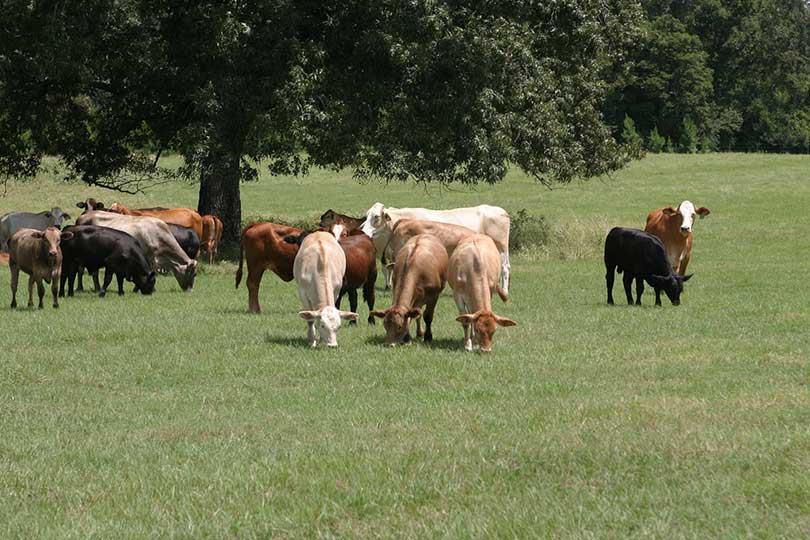By Jennifer Dorsett
Field Editor
Now that the hot, dry summer months are here, it’s important to make sure cattle stay hydrated.
Stock tanks and ponds that have kept cattle watered through the winter and spring may be drying up as parts of the state battle drought or severe dry conditions. Access to clean, plentiful water sources will help keep cattle healthy and productive.
A 1,000-pound heifer needs about 20 gallons of water a day to stay hydrated, according to the Texas A&M University Veterinary Medical Diagnostic Laboratory (TVMDL). During normal conditions, green forage may provide some of that daily water requirement, but during a drought, forage dries out and provides less hydration and nutrition.
Check pumps, troughs and tanks frequently to ensure cattle stay hydrated. Several dangers may be present in or near water sources, according to TVMDL.
Evaporating water may increase concentration of salt, minerals and inorganic materials. Cattle will avoid water they find unpalatable due to rising levels of one or more of these components, which can lead to water deprivation and dehydration.
Levels of sodium, calcium, nitrates, magnesium salts and sulfates should be monitored when water supplies begin drying up. If concentrations get too high, other sources of fresh water should be found.
In addition to mineral concentration, stagnant water can also encourage the growth of blue-green algae, some of which are toxic. Algae often concentrate on the downwind side of a pond.
The presence of dead small animals or fish along the downwind side of a pond may indicate blue-green algae growth, but the first indication may be dead cattle, TVMDL said.
Toxic weeds like small-headed sneezeweed or knotweed may also grow alongside tanks. Treat weeds or control grazing as necessary.
Water deprivation and mild dehydration can be corrected, but excessive dehydration can lead to sodium intoxication, a potentially deadly condition.
When cattle become too dehydrated, sodium levels increase throughout bodily tissues and organs. If dehydrated cattle find water and drink too much too quickly, the liquid will rush to their brains and may build intracranial pressure. Cattle with this condition may display staggering gait, instability or seizures.
To prevent dehydration, TVMDL recommends ranchers avoid holding cattle in pens that lack water sources for long periods and not working cattle in the heat of the day.
Cattle are creatures of habit, so if their preferred tank or trough dries up, animals may ignore other distant watering points in the pasture. They may need to be pushed or moved to the other water source before they will readily return to the new area to drink.
When cattle are moved to new pastures, drive the animals to troughs or tanks and watch to ensure they’re drinking adequately.
If cattle do become dehydrated, they need to drink water immediately, but only in small amounts.
Empty troughs should first be filled only a few inches, or the sodium toxicity situation may occur. Encourage all cattle to drink at once to create competition for the water. Repeat several times, allowing 30 minutes between each watering until thirst is satisfied. Monitor the animals’ water intake and in-crease it gradually to avoid health problems.
To learn more, visit TVMDL or call the College Station laboratory at 888.646.5623 to schedule a consultation with a veterinary diagnostician.
Ranchers should also contact their veterinarian with questions and to complete a vet-client patient relationship form.

